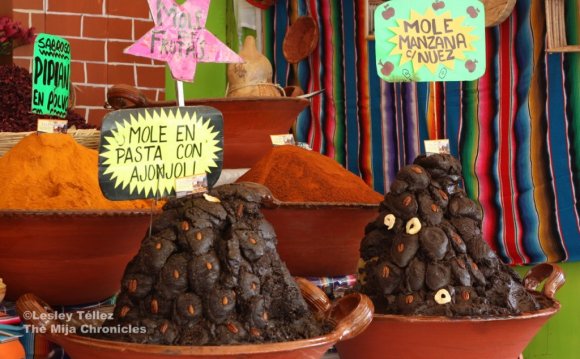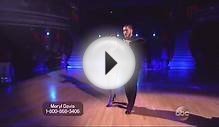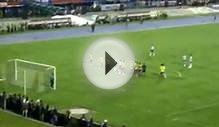
 By Stephen Brown
By Stephen Brown
In Buenos Aires and other components of Argentina, tango is danced in a spectrum of individualistic or individual styles, and several tango performers that are Argentine do not take a categorization of their own dancing by any broad stylistic title. They just state they're moving tango, their design, or the model of their particular community or city. Various mistake the issue more by pinpointing their own style by a name that various other performers keep company with a unique style. Consequently, parsing the commonalities and variations available throughout the continuum of individual styles to demonstrably explain the characteristics of numerous styles is challenging, possibly questionable, and perchance misleading. However, whenever we consider design to indicate an approach to dance that creates incompatibilities with other approaches and has now an adequate wide range of adherents who stick securely to your detailed elements, i believe you can easily create harsh meanings for a number of distinguishable varieties of Argentine tango: tango de salon, Villa Urquiza, milonguero, club, orillero, canyengue, reciente, fantasia and tango escenario.
and tangos that are danced socially in salons rather than for event (want otherwise ) or perhaps in improper venues (like ).
Typical tango de hair salon needs that dancers exercise value for distinct party, but the embraces and characteristic motions can vary considerably across individual designs.
Outside Argentina, something often known as "salon-style" tango may relate to the, , or a mixture of these styles. The blended design have a looser embrace with a more obvious V than the Villa Urquiza design. The more length between your partners allows the lady to execute the lady converts much more easily and pivot without needing much independent action between the woman sides and body. The looser embrace accommodates showy movements and will result in a blending of types many observers would start thinking about only suited to events.
Villa Urquiza
Called for just one of the communities of Buenos Aires, the Villa Urquiza model of tango is normally danced with an upright human body pose with all the two dancers maintaining split axes and seeking toward the clasped fingers for the embrace. The embrace is usually shut, however the few loosens the embrace somewhat to accomodate the turns and allow the girl to turn more freely. The more the girl rotates the woman sides through turns by themselves of her top body, the less the embrace needs to be loosened. Because both dancers look toward the clasped arms, the embrace may produce the feeling of hook V, where woman's remaining shoulder is closer to the guy's right shoulder than her left neck will be to his right. Despite the name, the style is danced throughout most neighborhoods of Buenos Aires, and it is occasionally known as "Tango Estilo del Barrio." External Argentina, the style is widely known as "salon-style tango."Milonguero-Style Tango
Milonguero-style tango is usually danced with a somewhat leaning position that typically joins the torsos of the two performers through the stomach through the solar power plexus (in an embrace that some Argentines call apilado) to produce a merged axis while enabling a little bit of length involving the couple's feet. The embrace can be usually closed with all the woman’s right shoulder as close to her companion's remaining shoulder as her left shoulder is always to his right, in addition to female's left supply is generally draped behind the man's throat. Some practitioners of this design declare that each performer lean against their particular companion. Others state that the lean is more of an illusion in which each companion maintains their own balance, but leans forward adequate to perform the embrace. The couple keeps a consistent upper body contact and does not loosen their particular embrace to support turns or ochos, which could limit the couple to walking tips and simple ochos until both lovers develop the relevant skills for the lady to perform the woman turns by going at an angle in the place of pivoting. Milonguero-style dancers typically react to the that is prominent within the music of Juan D'Arienzo and Rodolfo Biagi and also found in the playing of numerous other tango orchestras. The milonguero design enables a far more elastic approach to the rhythm whenever dancing to music who has a less insistent, such as for example that recorded by Di Sarli or Pugliese. The ocho cortado is the one the characteristic numbers of milonguero-style tango because it combines the embrace with rhythmic sensibilities of design.Milonguero-style tango may also be recognized as apilado-, cafe-, and confiteria-style tango. Among better-known performers associated with the design, Tete, labeled their own design as "tango de hair salon."
Club-Style Tango
Club-style tango gets the rhythmic sensibilities of , nonetheless it uses a far more upright pose, separate axes and close embrace of this design of tango. The few may loosen their particular accept somewhat on the turns to allow the woman to rotate much more easily and pivot without needing much independent motion between her sides and torso. In the event that woman rotates the woman sides through the turns independently of the woman top torso or tips back at an angle, the embrace will not need to be loosened as much. Club-style tango is usually danced to your which prominent in songs of Juan D'Arienzo and Rodolfo Biagi also is situated in the playing of several various other tango orchestras. Club-style tango makes use of the ocho cortado alongside rhythmic figures that are within milonguero-style tango. Possibly a rhythmic difference associated with the Villa Urquiza form of tango, many people respect club-style tango as a mish mash of types without an independent design. Club design tango may also be defined as Tango Estilo del Centro, referring to its current use into the main section of Buenos Aires.Orillero-Style Tango
Orillero-style tango is an adult design of tango whose title implies that it might probably have experienced its beginnings inside roads of poor outlying tenements in Buenos Aires. Later it came to refer to the person moving all over side of the woman. In any case, orillero-style tango was not considered acceptable in refined salons of central Buenos Aires during golden age of tango. Into level that orillero-style tango continues to be danced it's be a little more such as the Villa Urquiza type of tango. It's danced with upright human body pose using dancers maintaining individual axes, plus the embrace is normally offset in a-v and may be either close or open. Within the turns, the girl is permitted to move freely and pivot without needing much independent motion between her sides and torso. Whenever orillero-style tango is danced in a close embrace, the couple loosens the embrace slightly to support the turns. If lady rotates the woman hips through turns separately of her top body, the embrace do not need to be loosened as much. Orillero-style tango varies from salon-style tango as it adds playful, space-consuming embellishments and numbers that don't constantly respect the line of party. A number of the playful elements tend to be executed toward that characterizes the music of Juan D'Arienzo and Rodolfo Biagi.Canyengue
Canyengue is a historical as a type of tango that has been danced inside 1920s and very early 30s which could or may possibly not be precisely captured by its present practitioners. The embrace is close plus in an offset V, the dancers routinely have bent knees while they move, and woman doesn't perform a cross. During the time canyengue ended up being preferred, clothes were very long and tight. Consequently, the measures were brief and frequently executed in the this is certainly characteristic of this tango music played by the old shield including Francisco Lomuto, Francisco Canaro (at the beginning of his job), Roberto Firpo, and Juan de Dios Filiberto. (The modern-era orchestra Los Tubatango played in identical style.) Some dancers of canyengue usage exaggerated human body moves to accent their particular tips.Nuevo Tango
As it was initially conceived, nuevo tango was mainly a pedagogic method of tango that emphasized an architectural evaluation of party whereby the contacts between tango's elements could possibly be investigated and brand new combinations and action patterns might be found. A number of the dancers checking out those options gradually created nuevo tango into a style that is danced in an open, loose or flexible embrace with a tremendously upright pose and a great increased exposure of the dancers maintaining their axes. Though some advocates of tango reciente stress its architectural evaluation over particular numbers, probably the most identifiable numbers associated with the design tend to be overturn ochos, cadenas, linear boleos, volcadas and single axis spins—most of which are best carried out in a loose or elastic embrace.Fantasia (Program Tango)
The term "tango fantasia" refers to a convention design of dancing that draws principally on the Villa Urquiza style of tango but utilizes embellishments much more thoroughly and adds dramatic positions, ganchos and high boleos, that have their particular origins in some element of tango's history. This design created for usage in exhibitions during pauses in personal dance at milongas, but ended up being held to the level. Because the stage style developed through addition of elements away from tango vocabulary, some individuals recognized the effect as . Many individuals reference all types of event tango as fantasia.Tango Escenario (Phase Tango)
The word "tango escenario" means tango danced in stage programs. This design initially drew through the idioms for the Villa Urquiza and orillero styles of tango but today also includes components of nuevo-tango. Tango escenario is danced in an open embrace with exaggerated movements and additional elements (often obtained from ballet) that aren't part of the social tango language. The balletic elements integrate really with the Villa Urquiza type of tango as the means a couple relates to one another's space within the Villa Urquiza design is extremely balletic in general, despite the fact that tango motions are typically much more grounded like contemporary party. Many people make reference to all types of convention tango as .Nuevo Milonguero
Nuevo milonguero is a comparatively brand-new method of Argentine tango that adds some nuevo moves such as cadenas, volcadas and single-axis spins to milonguero-style tango. It might oftimes be a stretch to respect nuevo milonguero as a different design of tango since the approach is fully compatible with the motions in milonguero-style tango (or even the sensibilities), and nuevo milonguero doesn't always have an identifiably split group of adherents. Truthfully, nuevo milonguero might-be considered the program version of milonguero-style tango as the added elements are showy but can be unsuitable for dancing in crowded venues.Liquid Tango
Liquid tango is method of dancing Argentine tango in which the embrace shifts between close and open to let the integration of numerous varieties of tango, specially the reciente and club designs. It's probably premature to think about this another model of dance because the method is largely suitable for moderno and doesn't always have an identifiably split set of adherents.Some Additional Comments about Style
Which Design is Genuine?Each one of these styles possess some degree of credibility since they draw from practices, idioms, and historic precedents of Argentine tango because it's and was danced in Buenos Aires, Montevideo, as well as other towns in Argentina and Uruguay. Some designs are far more popular in a specific town or in venues within a city, but appeal really should not be confused with credibility. Fantasia and tango escenario are authentic for convention dancing although not for personal dance.
A few of the confusion about credibility will be the outcome of variations offering various personal functions through the fantastic chronilogical age of tango. The Villa Urquiza design of tango ended up being danced in good groups, where one ended up being anticipated to get dressed up and dancing very slowly. The milonguero and club types were danced much more crowded venues, some of dubious reputation. Orillero was considered a lower life expectancy course or road design of tango. Most of the time, the same person would dancing somewhat variations in various venues or even different music.
Which Styles Have an Open Embrace and that have a detailed Embrace?
Every one of the styles except tango escenario could be danced in a close embrace. Although Villa Urquiza and orillero-style tango may be danced in an available embrace, they've been much more typically danced in a detailed embrace in Buenos Aires along with other components of Argentina. Milonguero- and club-style tango are merely danced in a close embrace. The milonguero-style embrace can also be typically shut using female's right shoulder as near to her partner's left shoulder as the woman left neck would be to their right. The reciente embrace is loose and flexible, but many associated with movements that are emphasized in tango moderno are danced in either the apilado or perhaps the close offset V embraces.
Embrace and Frame
Many people distinguish between milonguero alongside types of tango by saying the framework in milonguero-style tango is in the woman, plus other designs the frame is made in hands for the embrace. Perhaps the frame is inside woman or perhaps in the hands associated with the embrace depends mostly upon the closeness and softness for the embrace. A strong, distant embrace places the framework within the arms of this embrace. Because the embrace becomes closer and softer, the frame is relocated in to the woman's human anatomy in most styles.
Understanding Salon-Style Tango?
The expression "salon-style" was applied to a range of designs from Villa Urquiza to fantasia. Often tango escenario is taught as salon-style tango. Because the Villa Urquiza design serves as the base for the convention styles of tango, it really is relatively easy to incorporate event elements to Villa Urquiza that are unacceptable for personal dance. Incorporating these elements belies the name salon-style as the resulting design is unsuitable for dancing in crowded milongas.
Isn't Salon-Style Tango an Exhibition Design Of Tango?
Understanding taught as "salon-style tango" ranges from Villa Urquiza to fantasia or tango escenario. Both exhibition styles can be regarded as an extension of Villa Urquiza because they rely greatly upon Villa Urquiza tango for a basic group of motions. Convention tango adds showy figures and touches (and often ballet or other theatrical moves) which can be improper for personal dance. Numerous tango instructors confuse their students by teaching an indistinguishable mixture of social and exhibition numbers and phoning it beauty salon tango. This hybrid design is described as an open embrace, huge steps, remarkable pauses, conspicuous ornamentation, and sometimes a disregard for line of dance. The hybrid style is danced socially by many large number of dancers outside Argentina and Uruguay, that mostly unaware that their form of dance of improper for moving in crowded milongas in Buenos Aires or somewhere else.
Which Styles Tend To Be Improvisational and That Are Choreographed?
The styles tend to be possibly improvisational including fantasia and tango escenario. Phase tango can be choreographed. Exhibitions at milongas may be improvised or choreographed. Numerous instructors just who explain the style they show as salon tango focus on memorized figures inside their training. These types of teachers may however intend that their particular students understand that tango is an improvisational dance that employs a strict type of action across the party floor.
Which Styles Tend To Be Experiencing and Which Are Analytical?
Some people look upon improvisation in Villa Urquiza, orillero, fantasia, and nuevo tango as problem pieces being put together as you dance, and the ones whom train the dwelling of tango within these styles can stress the analytical nature of the party. If these styles take place within the intellectual domain and not moved to the intuitive and psychological domain names, they can stay a dry, analytical problem. Performers and instructors of milonguero-style tango usually focus on the intuitive and experiencing components of the design, but it are approached in an equally analytical fashion to the other designs.
RELATED VIDEO












